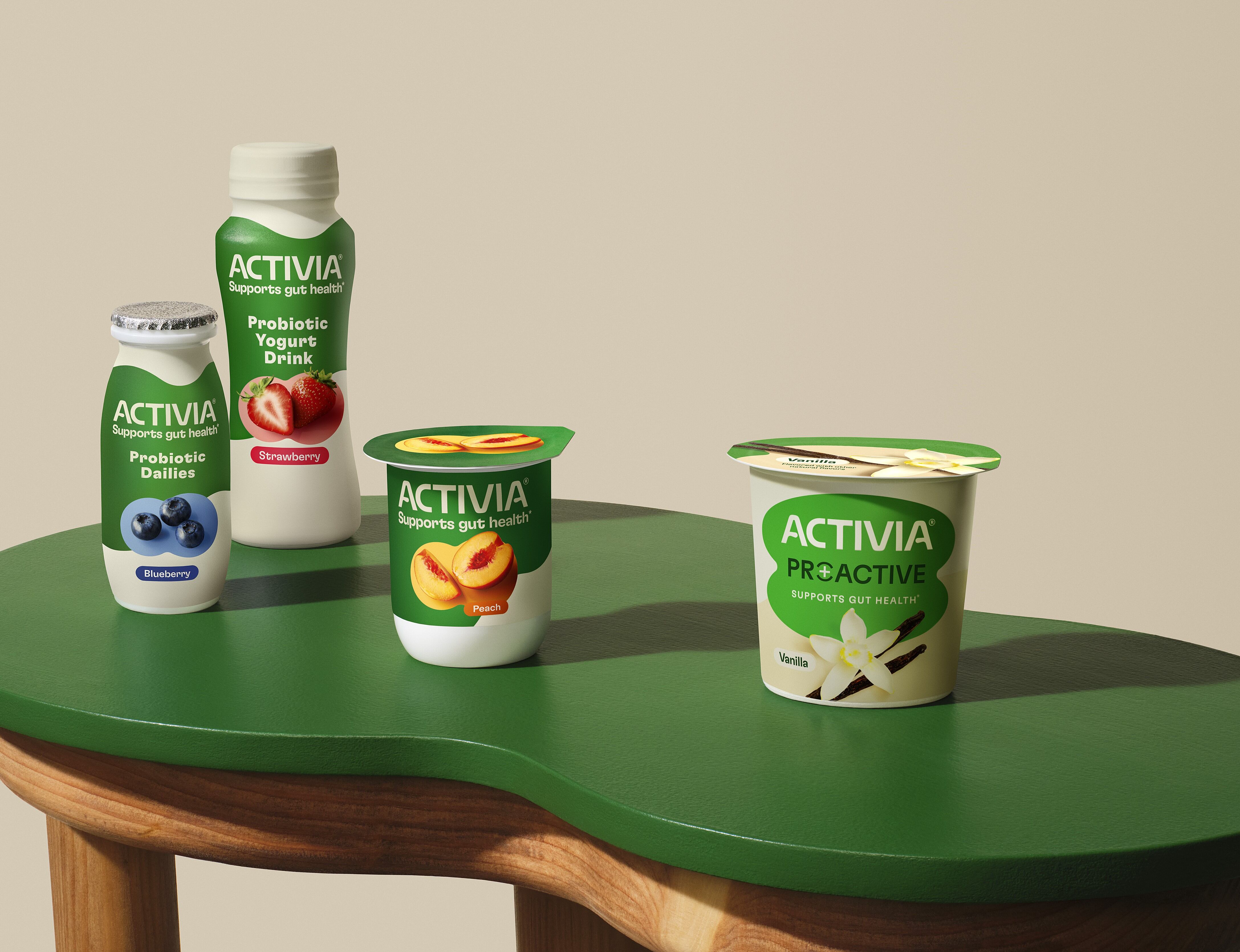Despite being a market-leading brand, Activia has been missing the mark with Gen Z. Danone’s marketing VP tells us how the firm is making biotics buzzworthy for a new generation of consumers
It may be the top gut health brand in the probiotic space, but Danone has been busy giving Activia a new look. The iconic green-and-white branding remains, but a lot – from formulations to packaging – has been cleaned up to better position the brand to health-conscious Millennial and Gen Z shoppers.
Having started in North America this summer, the brand refresh is set to carry on globally, Danone’s Derek Neeley, vice-president, marketing, gut health, told us.
So far, Danone has released Activia Proactive, a new range of fiber-fortified, low-fat yet thick and creamy flavored yogurt in the US; and generated buzz through the Activia Gut Health Challenge, which calls on shoppers to test the brand’s digestive health benefits by consuming probiotic yogurt twice a day for 14 days.
“Gen Z and Millennial consumers are looking for gut health products across the grocery store: the supplement aisle, you name it; they’re looking for it everywhere,” Neeley said.
“Activia started in the US in 2006 and saw a pretty meteoric rise because it fulfilled a critical need. And we felt like, after being in the US for nearly 20 years, it was time to modernize and bring this brand to a new generation of consumers – literally."
“Consumers who like us really like us – and they repeat-purchases and don’t really buy other brands. But our recruitment of these younger consumers has been lacking.”
Derek Neeley, Danone
To make amends, Danone has redrawn its marketing strategy – turning to social media influencers and platforms that would reach younger shoppers more effectively than traditional forms of advertising.
Getting Gen Z to listen
“We have traditionally had a very linear, TV-type of approach to our media campaign,” Neeley said. “This year, it’s a social-first, influencer-led campaign.
“We know that consumers don’t always trust what brands tell them – but if you can partner with the right influencers, consumers believe those messages very much.”
Danone has hired influencers from various walks of life: from lifestyle influencers to science and medical doctors. “This is how we are getting the message across,” Neeley said, “and just communicating the inherent benefits that probiotics have.”
There are ‘definite benefits’ in spreading that message as wide as possible, the marketing VP added. “The idea is that if you can reach far enough, those consumers who are looking for gut health benefits will get the message either way. It’s a pull strategy as opposed to a top-down push strategy.”
It’s about ‘diversity in the message and diversity in the channels’.
“If you show up in a 30-second spot on ABC where a doctor explains the science, especially in the US, consumers are particularly distrustful of institutional knowledge or institutional scientists. And we have all sorts of marketing levers to pull, but it’s really about diversity in the messaging.”
In a big way, that strategy is about avoiding confusion.
“Most consumers don’t fully understand the link between probiotics and science,” Neeley said. “However, there is a growing interest, and we have other channels that specifically explain the science for those who want to scratch beyond the surface of the messaging.
“But for others who just want to know that probiotics are good for their gut, that messaging is there, too.”
The takeaway? Finding ways to reach consumers is “more multi-layered than it’s ever been when it comes to talking about health products,” he concluded.


